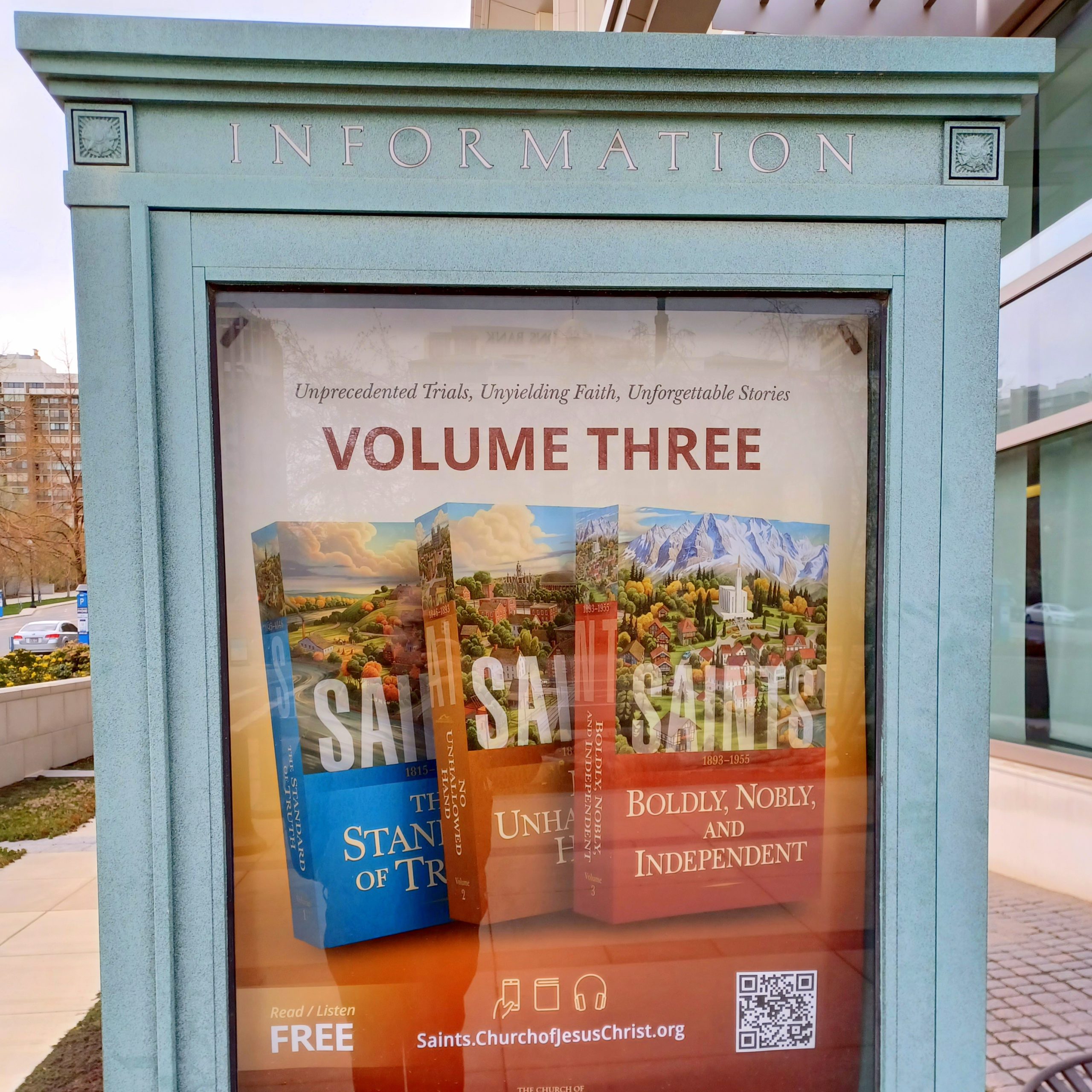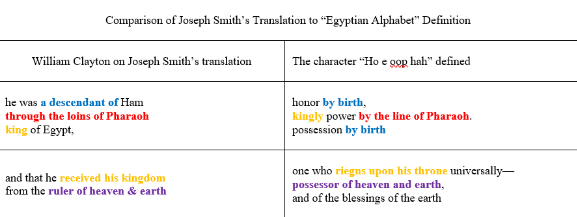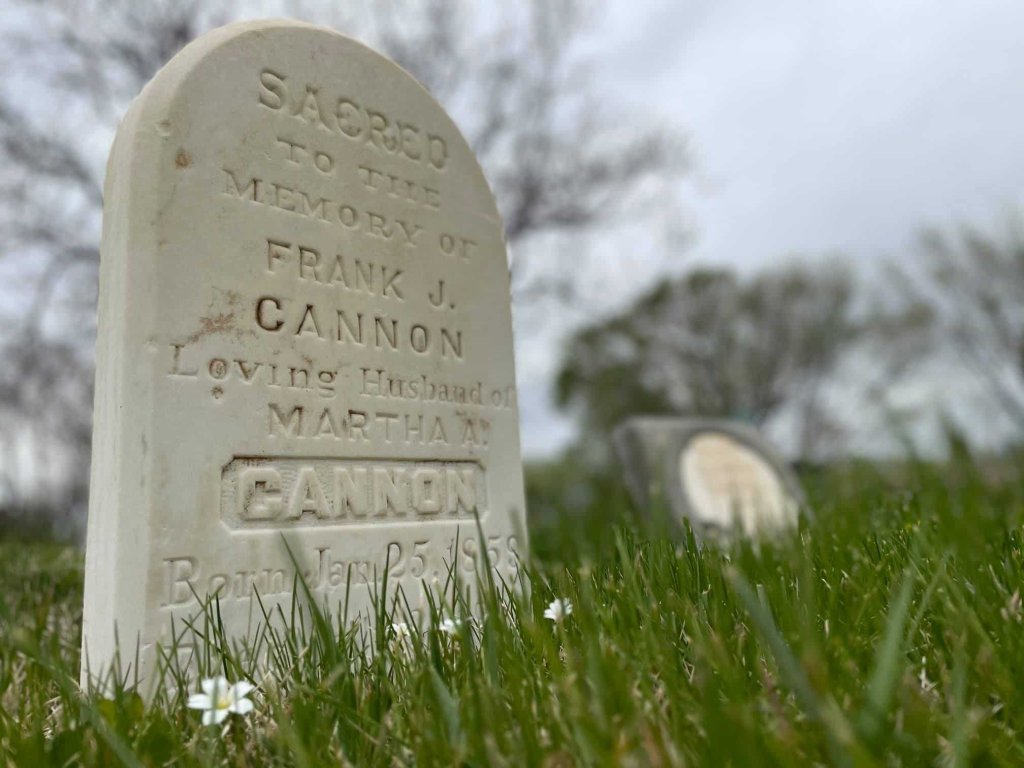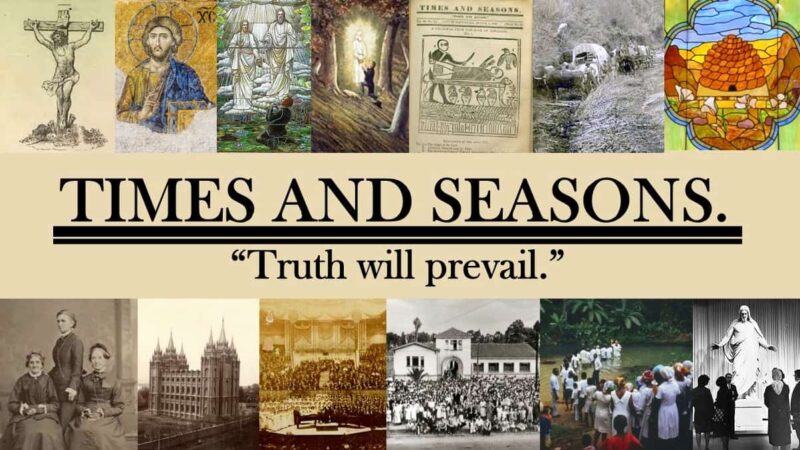Category: From the Desk Co-posts
-
Relief Society Records
Documents feel like treasures to me. They give insight into the past and have to be mined to get everything you can out of them. Because of that, it’s really exciting that the Church has begun to release minutes from the Relief Society General Board. In a recent interview at the Latter-day Saint history blog…
-
Grace, Works, and Becoming
Since at least the time of Augustine of Hippo and Pelagius, western Christianity has been embroiled in a debate about salvation and grace. The two extremes have been represented as salvation by grace alone and earning salvation by our own works. In a recent interview at From the Desk, Terryl Givens described the need to…
-
Accuracy of the Journal of Discourses
One of my ongoing dreams is to be able to afford a full set of the Journal of Discourses as part of my collection of Latter-day Saint books (though given the price tag, it probably won’t happen any time soon). In any case, the Journal of Discourses holds an interesting place in the Church of…
-
The Smith Family and the First Vision
One of the more interesting points of contention about the history of the First Vision is how much Joseph Smith’s family knew about the First Vision. During his lifetime, only 4 accounts of the First Vision were published in English – Orson Pratt’s “A Interesting Account of Several Remarkable Visions” in 1840, the official history…
-
Ghostwriter to the Prophet
I suspect that if we really knew and experienced the early history of the Church of Jesus Christ of Latter-day Saints for ourselves, we might be surprised by who were the most influential members in shaping the developing Church. In a recent From the Desk interview, Bruce A. Van Orden discussed one candidate for that…
-
Susa Young Gates
When I was a child, I heard of Susan B. Anthony, Susa Young Gates, and John Sousa, but had trouble separating them out in my mind because of similarities in name. The result was that I thought Brigham Young had this rockstar daughter who was featured on a silver dollar for her women’s rights activism…
-
Considering Emma Hale Smith
Emma Smith isn’t just an elect lady, she’s a complicated one too. Jenny Reeder, author of First: The Life and Faith of Emma Hale Smith, recently discussed reasons for why that is the case in an interview with From the Desk. Alternatively vilified or considered an hero of the Restoration in the Church of Jesus Christ…
-
The King Follett Discourse
The irony of the King Follett Discourse is that it is the most famous discourse given by the Prophet Joseph Smith, but still rarely quoted in general conference or other official publications of the Church of Jesus Christ of Latter-day Saints. In a recent From the Desk interview, James Falcouner discussed some of the reasons…
-
Women of the Hebrew Bible
In a culture that is often male-centric, it can sometimes be easy to overlook women in the scriptures. While very few are mentioned by name in the Book of Mormon or the Doctrine and Covenants, the Bible has many women who are mentioned by name and featured in the stories therein. In a recent From…
-
George D. Watt’s Journey
I’ve heard it said before that Leroy Anderson was America’s best-known forgotten composer. It could likewise be said that George D. Watt is Mormonism’s best-known forgotten reporter. In a recent interview at From the Desk, Kurt Manwaring discussed why Watt is important and the recent publication of his 1851 journal with LaJean Carruth and Ronald…
-
Mormon Doctrine, McConkie, and Modern Mormonism
Bruce R. McConkie stands in an interesting place in the history of the Church. For some, he holds a place in the upper echelons of a pantheon of Latter-day Saint thinkers and writers who have shaped, advocated, and defended the doctrines of the Church of Jesus Christ of Latter-day Saints. For others, he is seen…
-
The Constitution of the Council of Fifty
What is the Kingdom of God? If it were a political entity, how would it be organized? What sort of charter would it have? In a recent interview with Kurt Manwaring at From the Desk, Nathan Oman discussed an early effort to think through these types of questions in the Church of Jesus Christ of…
-
Robert Eaton on Henry B. Eyring
Truman G. Madsen once said that: When people ask me: ‘Why are you so preoccupied with reading the life and teachings of Joseph Smith?’ One answer, and it is the most powerful one, in my heart, is because he is like a window, through which I can see the living Christ. (https://www.fromthedesk.org/truman-madsen-biography/) Occasionally, other Church…
-

Saints 3: Thoughts from Scott Hales and Jed Woodworth
I hope by now it’s apparent that I am a fan of the Saints history series and that I’ve been really looking forward to Volume 3, which comes out on the 22nd. I will say, it’s fantastic, but you’ll get to read more of my thoughts next week. Today, however, Kurt Manwaring published an interview with Scott…
-
On Winter Quarters
Sometimes called the “Valley Forge of Mormondom”, Winter Quarters was the primary (thought not exclusive) location that Latter-day Saints in the United States of America lived between their forced exodus from Nauvoo and their efforts to move westward to the Great Basin region. In a recent interview with Richard Bennett, Kurt Manwaring discussed the history…
-
The Book of Abraham Book
I once had a teacher who loved to say that: “The more you know, the more you know you don’t know.” To some degree, this is not infrequently the case when it comes to studying issues in the history of the Church of Jesus Christ of Latter-day Saints. Let’s Talk About the Book of Abraham…
-
Of Brigham and Bridger
Jim Bridger and Brigham Young are two very important people in the Euro-American colonization of the American west. Their relationship with each other, however, was complicated. Kurt Manwaring recently discussed that relationship with Jerry Enzler in connection with Enzler’s biography, Jim Bridger: Trailblazer of the American West. What follows here is a copost to the…
-
Open Questions in Latter-day Saint Doctrine
Recently, Kurt Manwaring let me know that there was an issue of BYU Studies that had recently come out that I feel like will be a very impactful issue moving forwards. The issue–also published as a book entitled Yet to be Revealed–focuses on unanswered questions in Latter-day Saint theology and brings an impressive array of big names…
-

Translating the Kinderhook Plates
The Kinderhook plates provide an interesting incident in Church History that provide an interesting test case for how Joseph Smith approached translation. What are these plates? What can we learn about Joseph Smith from the incident? Well, Mark Ashurst-McGee and Don Bradley recently sat down with Kurt Manwaring for an interview to discuss what they…
-
Peace and Zion
For me, one of the most beautiful concepts in the Church of Jesus Christ of Latter-day Saints is the idea of Zion. Yet, to achieve that ideal, we are going to have to think and act radically differently than we are accustomed to thinking and acting. In a recent interview with Kurt Manwaring, Patrick Mason…
-
Brian and Laura Hales on Polygamy
‘Tis the season … to talk about polygamy, apparently. Kurt Manwaring recently sat down with Brian and Laura Hales for a question and answer session about polygamy. They have spent decades researching and writing about plural marriage (past and present), approaching the subject as faithful members of the Church of Jesus Christ of Latter-day Saints. …
-
An Interview with Reverend Dr. Andrew Teal
Have you ever met anyone who, through their example and experiences, leads you to seek deeper for God and Christ in your own life? Reverend Dr. Andrew Teal (a chaplain, fellow, and lecturer in theology at Pembroke College, Oxford University) is one of those types of people. Recently, he has been a visiting resident scholar…
-
Brittany Chapman Nash on Polygamy
We’re coming up on one of the most dreaded lessons of the Sunday School cycle—no, not reviewing the law of chastity with teenagers, the lesson that includes D&C 132 (the revelation on plural marriage). Polygamy is a topic in the Church that is uncomfortable, troubling and, at times, painful to discuss. Recently, however, the Church…
-
Terryl Givens on Eugene England
In general, the people who are in a position to be most influential in the Church of Jesus Christ of Latter-day Saints have been official Church leaders. That’s not always the case, however, since there are a number of members of the Church who have proven influential and important in different ways—Truman Madsen, Hugh Nibley,…
-
Archeology, Ceramics, and the Smith Family in Tunbridge
In addition to written records, people leave behind traces of their material lives that can tell us much about who they were. In a recent interview with Kurt Manwaring, Mark Staker (a Master Curator for the Church History Department’s Historic Sites Division) discussed some of the research he has been doing on the place Joseph…
-
Historical Mindset for Mormons, 101
While studying in a scientific field, two major ideas were drilled into me that have been fairly helpful in interpreting history. First is the belief that nothing can ever truly be proved, only that things can be disproved. If something goes a long time without being disproved, then it is likely (though not certainly) to…
-
Joseph F. Merrill—Science, Religion, and Innovation
Joseph F. Merrill is an apostle who has largely been forgotten but who, nevertheless, left a major impact on the Church that remains a part of its DNA to this day. Kurt Manwaring recently sat down for an interview with Merrill’s biographer, Casey Griffiths, to discuss his life and impact. It’s an interesting discussion and…
-
Mr. Smith Goes to Washington
Joseph Smith’s presidential campaign has been an area of interest for several years now (particularly since the release of the Council of Fifty minutes), and Spencer W. McBride’s recently-published Joseph Smith for President: The Prophet, the Assassins, and the Fight for American Religious Freedom (Oxford University Press, 2021) is the latest in scholarship to be…
-
A Whole Lot of Hugh Nibley
Some years ago, I attended a course on the Pearl of Great Price at the Logan Institute that could have just as easily been entitled “Teachings of Hugh Nibley.” The teacher was well-versed in Nibley’s writings and frequently used them in discussing both the Book of Moses and the Book of Abraham. And, frankly, it…
-

Saint, Senator, and Scoundrel
“The lack of any biography of Frank Cannon seemed a glaring gap in [Utah] annals. It was high time to tell his story.” Val Holley recently stated this during an interview with Kurt Manwaring where they discussed Frank Cannon and Holley’s recently-published biography, Frank J. Cannon: Saint, Senator, Scoundrel (University of Utah Press, 2021). What follows…
